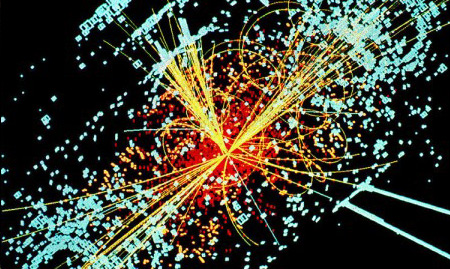One of the largest research groups supported by the HPC Center is the Compact Muon Solenoid (CMS) high-energy physics experiment. The CMS experiment is located at CERN’s Large Hadron Collider, and it is operated by a collaboration of over 3000 physicists from all over the world.
One of the major physics goals of CMS is the discovery of the Higgs particle, which has been predicted to exist for decades but has long eluded experimental observation. After more than a decade of preparation, CMS started to record collision events in the spring of 2010 and in July 2012, CMS (along with its sister experiment ATLAS) announced the discovery of a particle which may in fact be the Higgs particle.
Analysis of the CMS collision events and validation of experimental observations requires a tremendous amount of computation on very large data sets, and some of these calculations are performed at the HPC Center. In fact, the HPC Center has long been a leading contributor to the overall CMS computing effort, with over 25 million compute hours supplied to CMS since beams were first passed through the detector. And in particular, the compute capacity provided by the HPC Center was also a major contribution to the data processing effort that led to the discovery announcement (over four million hours from April to June 2012).
Some high-definition animation videos of the actual Higgs particle candidate events from CMS are available in the links below. The “Higgs to 4-muon” channel search is led by UF researchers, and that analysis was performed primarily at the HPC Center.
- Higgs to 4 muons: http://cdsweb.cern.ch/record/1459470
- Higgs to 2 electrons and 2 muons: http://cdsweb.cern.ch/record/1459469
- Higgs to 2 photons: http://cdsweb.cern.ch/record/1459468
Click on “Download high-res version: avi” below the flash player window to download 1080p HD format video from the above links.

